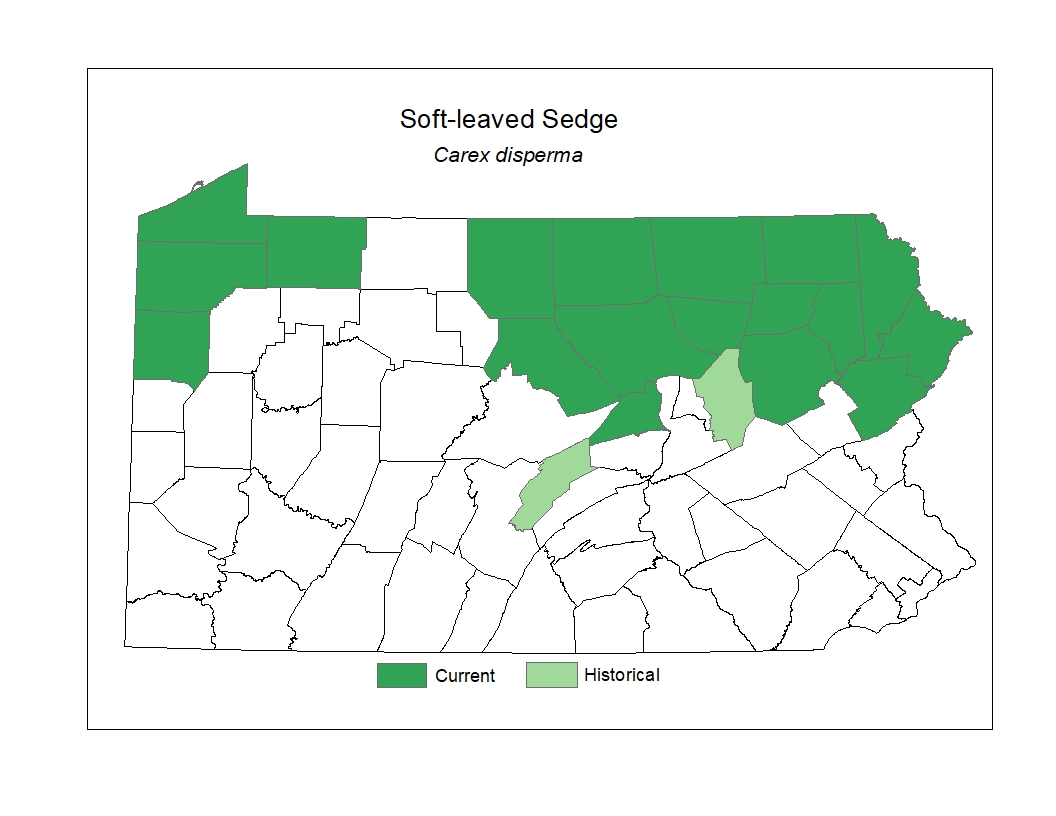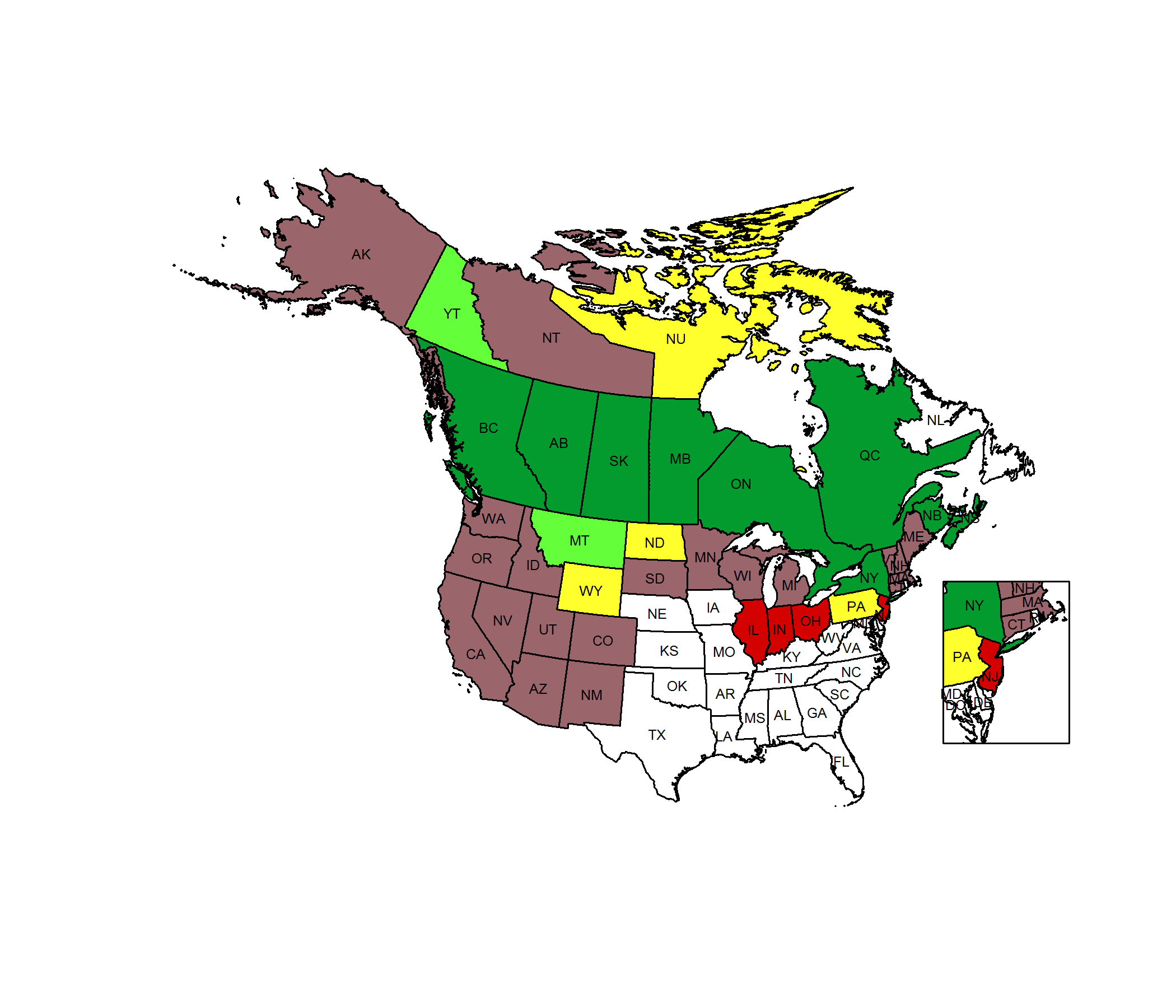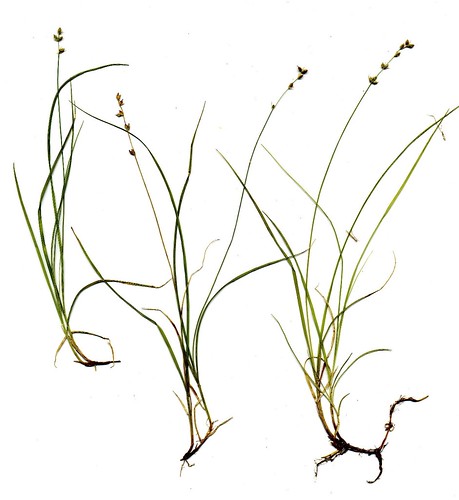 Species Factsheets
Species Factsheets
Carex disperma
Soft-leaved Sedge
State Status: Pennsylvania Rare (PR)
PBS Status: Pennsylvania Rare (PR)
Federal Status:
Global Rank: G5
![]() rank interpretation
rank interpretation
State Rank: S3
Description
Soft-leaved Sedge is a relatively delicate perennial grass-like plant that produces wide-spreading underground stems, or rhizomes. The three-sided aerial stems may grow to 0.3 m in height, but are often shorter. The leaves have a sheathing basal portion and an elongate and narrow blade that is alternately arranged and about 1-2 mm in width. The minute flowers, which appear in spring, are scattered in alternately arranged groups along the upper parts of the stem, with the male flowers at the very top and the female flowers (usually 1-6 per cluster) directly below. The plant is most recognizable when fruiting in late spring and early summer, with the fruits being enclosed in sac-like structures, or perigynia, which are about 2.5 mm in length and rounded in cross-section.
Rank Justification
Vulnerable in the nation or state due to a restricted range, relatively few populations (often 80 or fewer), recent and widespread declines, or other factors making it vulnerable to extirpation.
PABS
The PA Biological Survey (PABS) considers Soft-leaved Sedge to be a species of special concern, based on the moderate number of locations recently confirmed and the wetland habitat. It has a PA legal rarity status and a PABS suggested rarity status of Rare.
Habitat
The species grows in swamps, wet thickets, peaty wetlands, and bogs.
Survey Dates
Fruits May - August
Distribution
Soft-leaved sedge has a transcontinental range across the cooler regions of North America. In Pennsylvania, it is considered a northern species, and has been documented historically in the northern counties.

Management
The viability of populations of Soft-leaved Sedge and its habitat may be enhanced by creating buffers and protecting the natural hydrology around wetlands and controlling invasive species.
Conservation Status Map


NatureServe. 2017. NatureServe Explorer: An online encyclopedia of life [web application]. Version 7.1. NatureServe, Arlington, Virginia. Available https://explorer.natureserve.org.
- NatureServe. 2018. NatureServe Explorer: An online encyclopedia of life [web application]. Version 7.1. NatureServe, Arlington, Virginia. Available at https://www.natureserve.org/explorer
- Pennsylvania Natural Heritage Program. 2018.
- Rhoads, A.F. and W.M. Klein, Jr. 1993. The Vascular Flora of Pennsylvania. American Philosophical Society, Philadelphia, Pennsylvania. Rhoads, A.F. and T.A. Block.
- 2007. The Plants of Pennsylvania: An Illustrated Manual. 2nd edition. University of Pennsylvania Press, Philadelphia, Pennsylvania.







